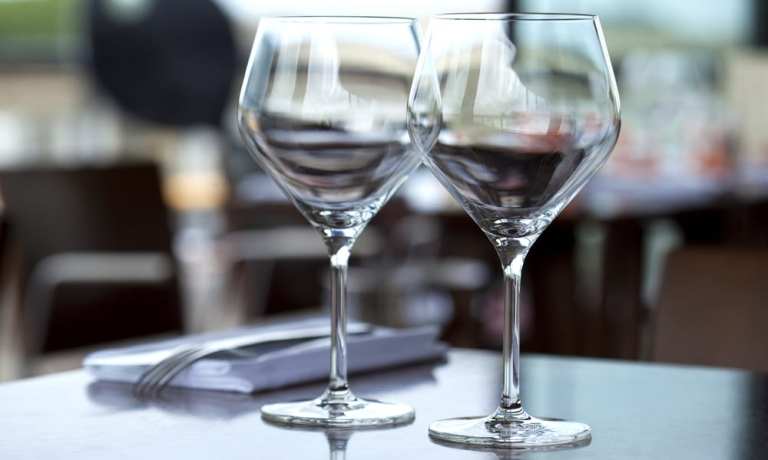What Famed Boston Eatery Petit Robert’s Owner Sees As Restaurants’ Future

Boston’s Petit Robert Bistro, one of the city’s fanciest French restaurants, started 2020 with expectations that were anything but small. Mild winter weather in Boston had led to stronger-than-average performances in January and February, and owner Loic Le Garrec told Karen Webster in a recent conversation that he expected going gangbusters through his typically busy spring season.
“I was expecting a huge spring season,” Le Garrec said. “It’s always a big time for us.”
But all of that changed virtually overnight when Petit Robert was forced to shut its doors by COVID-19 stay-at-home orders. That sent the restaurant and its staff scrambling to find a way to pivot powerfully enough to survive the coronavirus storm.
So far, it looks like the eatery will pull through — thanks to support it’s received from the local community to make a successful transition from fine eat-in dining to carryout and delivery. Le Garrec said Petit Robert has been serving up dining experiences — on-demand and remotely — well enough to recoup 40 percent of its former business, “so it’s not that bad.”
But as Massachusetts slowly lifts its ban on most retail operations, Le Garrec said there are still more unknowns than knowns for restaurateurs like himself. The state’s attempt to offer some guidance early this week had been less helpful than many Main Street businesses had hoped.
“I, as of today, still don’t know what to do when we are ready to reopen — how we can operate safely and what needs to be changed in the restaurant,” Le Garrec said. “This is what it has been like all the way through. We experience an everyday learning curve.”
Powering The Pivot
Le Garrec described his initial experience of the shutdown as something of a mad dash for survival. The restaurant sought out a state loan, an emergency Small Business Administration loan and a federal Paycheck Protection Program loan.
“We applied for everything,” the restaurateur said, noting that he successfully received all of the funding he requested.
Petit Robert also quickly pivoted from dine-in services to delivery, both through aggregators like Uber Eats and Grub Hub and also in-house, reaching customers via e-mail and newsletter lists.
“It’s a different business that we had to adapt to, and that we have had to push every day and find ways to do new things to ‘seduce’ people,” Le Garrec said. “Every week we have a special menu that we deliver on the weekend, and that’s when we work the most. We have three, four cars and we deliver. I actually drove around town myself delivering food and it’s not so fun … but we get to see our customers and they’re helping us out a lot.”
The net result: Le Garrec said that if Petit Robert had to survive long term the way it’s operating now, it could. It wouldn’t exactly be thriving, but Le Garrec would be able to pay his rent and staff.
But like most restaurateurs he associates with, he’s hungry to reopen — and is already preparing as much as possible to do so. The restaurant has already replaced its plastic menus with disposable paper ones, and is requiring staff to wear masks and have their temperatures checked for fever before starting work.
Le Garrec plans to do similar temperature checks on customers as soon as Petit Robert reopens its dining room, but can’t fully comply with social-distancing requirements because as the name “Petit” implies, his space is just too small.
“We can’t respect the rules — basically it’s impossible,” the entrepreneur said. “We cannot put people 6 feet apart.
“I think the key is to make sure people are healthy when they come in — the only thing we can do to help people protect themselves with our staff washing their hands and wearing gloves,” Le Garrec said. “But I think having people 6 feet apart in a restaurant? I don’t think it’s really physically possible.”
One option: turning the bistro’s front and back patios into seating areas during the warmer months to encourage customers to spread out.
But will the consumers actually return? That’s the trillion-dollar question as the U.S. economy’s “Great Reopening” enters its early days.
Merchants of all types and sizes are wondering if consumers will be excited to return to old habits like shopping in stores and eating in bistros. PYMNTS’ recent consumer surveys indicate that Americans really do miss eating out — but many plan to keep up with their transition to digital commerce long after enforced social distancing has ended.
But Le Garrec isn’t worried. From where he sits, there’s a genuine hunger among consumers not just to eat restaurant-prepared food, but to actually eat it out in the real world with other people.
“It seems that people really want to come out and socialize nowadays — they really have [had] enough of this,” he said. “I have a feeling that people will, frankly, go back to normal life as soon as possible.”